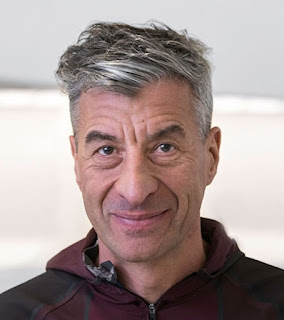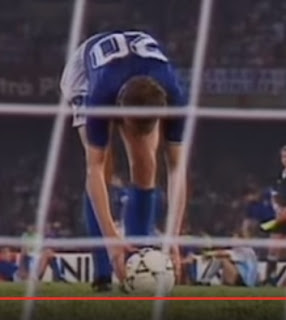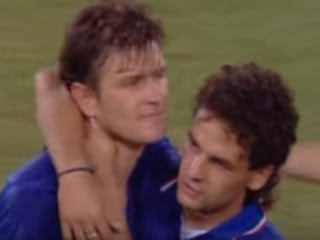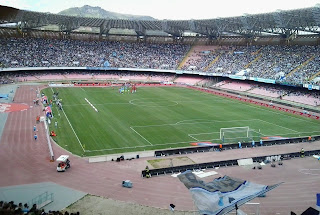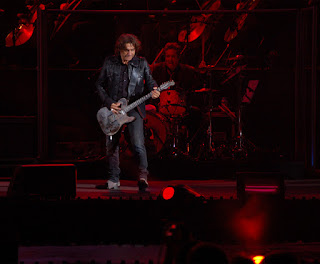First woman to be director-general of CERN
 |
| Fabiola Gianotti - the would-be concert pianist who instead became a brilliant physicist |
She led one of the two teams of physicists working for the organisation - general known as CERN after its title in French - whose experiments in 2012 resulted in the discovery of the Higgs boson, the particle that explains why some other elementary particles have mass.
The discovery was regarded as so significant in the advancement of scientific knowledge that it was nicknamed the “God particle.”
As the project leader and spokesperson of the ATLAS project at CERN, which involved a collaboration of around 3,000 physicists from 38 countries, Dr. Gianotti announced the discovery of the particle.
Their work involved the Large Hadron Collider (LHC), the world's largest and most powerful particle collider and the largest machine of any kind on the planet, which lies in a tunnel 27km (17 miles) in circumference, 175 metres (574 ft) beneath the France–Switzerland border near Geneva.
 |
| Fabiola Gianotti at the Large Hadron Collider site deep underground on the France-Switzerland border |
Brought up in Milan the daughter of a geologist from Piedmont who taught her to love nature, and a mother from Sicily who was passionate about music and art, Dr. Gianotti had ambitions to become a prima ballerina as a child, when she dreamt of becoming a dancer with the Bolshoi at Teatro alla Scala in Milan.
She also considered becoming a classical pianist, such was her talent for music. She spent two years at the Milan Conservatory, but after earning a PhD in physics at the University of Milan, she began her career at CERN with a graduate fellowship in 1994.
 |
| Fabiola Gianotti was inspired to break the traditional male domination of particle science by a biography of Marie Curie |
Even though particle physics has traditionally been a male-dominated domain - even now only 12 percent of the 2,500 physicists and engineers at CERN are women and only 20 per cent of the team that worked on the ATLAS project were women - Dr. Gianotti claims that she has never had a sense that she was discriminated against for being female.
However, she has argued that women in particle physics should be given more support when having children, claiming that a lack of support made it difficult for her to marry and start a family, a decision for which she has expressed regret.
 |
| Gianotti on the cover of Time magazine |
Brought up a Catholic, Gianotti insists that religion and science are not in competition with each other, saying that while science cannot demonstrate or disprove the existence of God, religion has to respect science, and they should co-exist in a climate of tolerance.
She lives in in Switzerland in an apartment with a view of Lake Geneva and Mont Blanc, plays music by her favourite composers on a Yamaha upright piano, has a passion for cooking and Italian culture.
 |
| The Milan Conservatory, Italy's largest music college, has a star-studded list of alumni |
The Milan Conservatory - also known as Conservatorio di musica “Giuseppe Verdi” di Milano - was established by a royal decree of 1807 in Milan, capital of the Napoleonic Kingdom of Italy. It opened the following year with premises in the cloisters of the Baroque church of Santa Maria della Passione in Via Conservatorio. The largest institute of musical education in Italy, its alumni include Giacomo Puccini, Amilcare Ponchielli, Arrigo Boito, Pietro Mascagni, Riccardo Muti and Ludovico Einaudi.
 |
| Da Vinci's The Last Supper is one of the many reasons to visit Milan |
Milan, where Gianotti grew up, is a global capital of fashion and design but also a financial hub, the home of the Italian stock exchange. Its historical monuments include the Gothic Duomo di Milano, the Santa Maria delle Grazie convent, which houses Leonardo da Vinci’s mural The Last Supper, the Sforza Castle, the Teatro alla Scala and the Galleria Vittorio Emanuele II.
More reading:
The scientist from Rome who created the world's first nuclear reactor
How Laura Bassi broke new ground for women in science - 240 years ago
Margherita Hack - astrophysicist who helped make science popular
Also on this day:
1922: Mussolini is appointed Prime Minister
2003: The death of tenor Franco Corelli
Home
